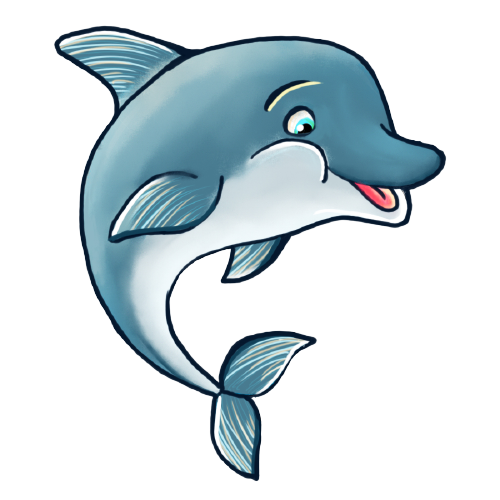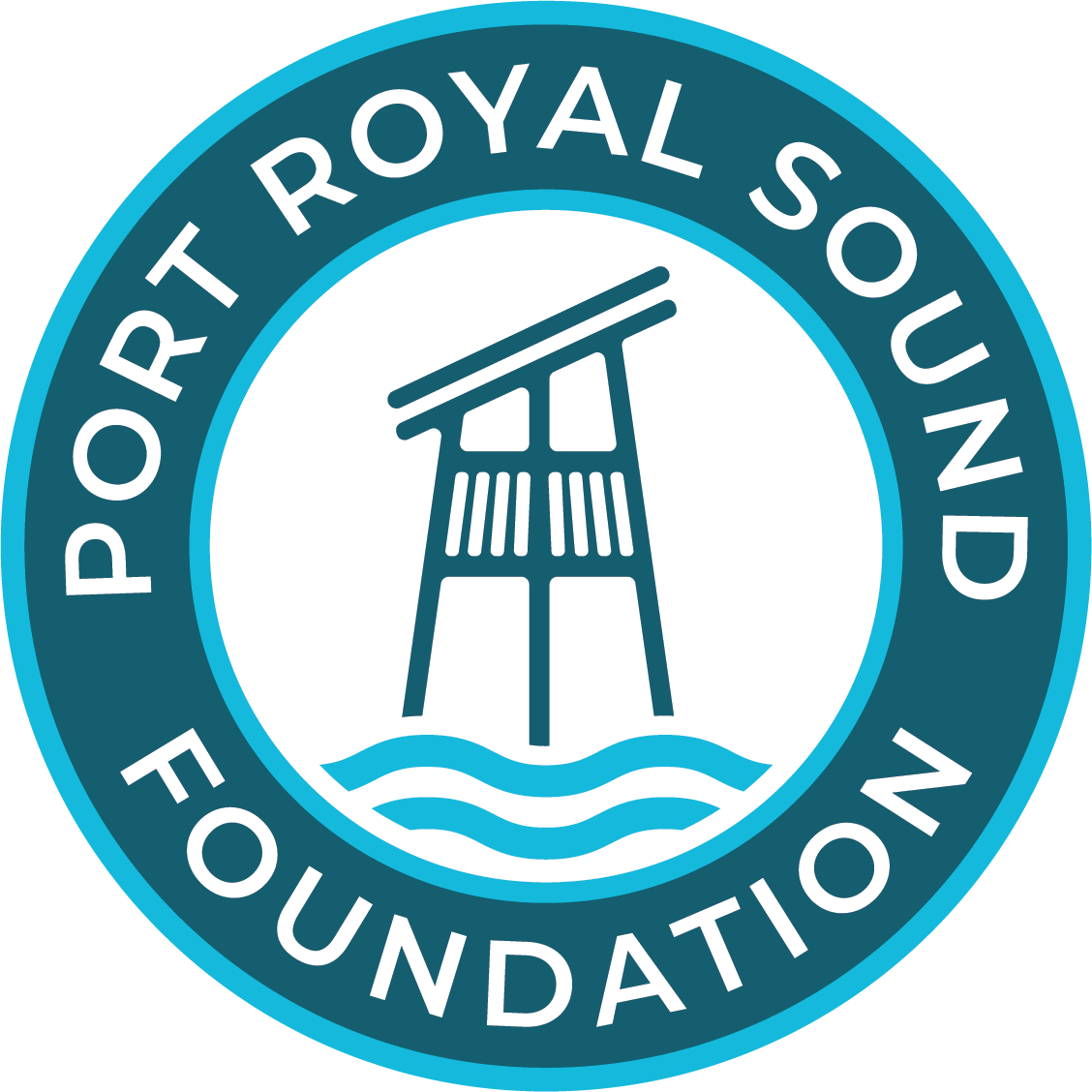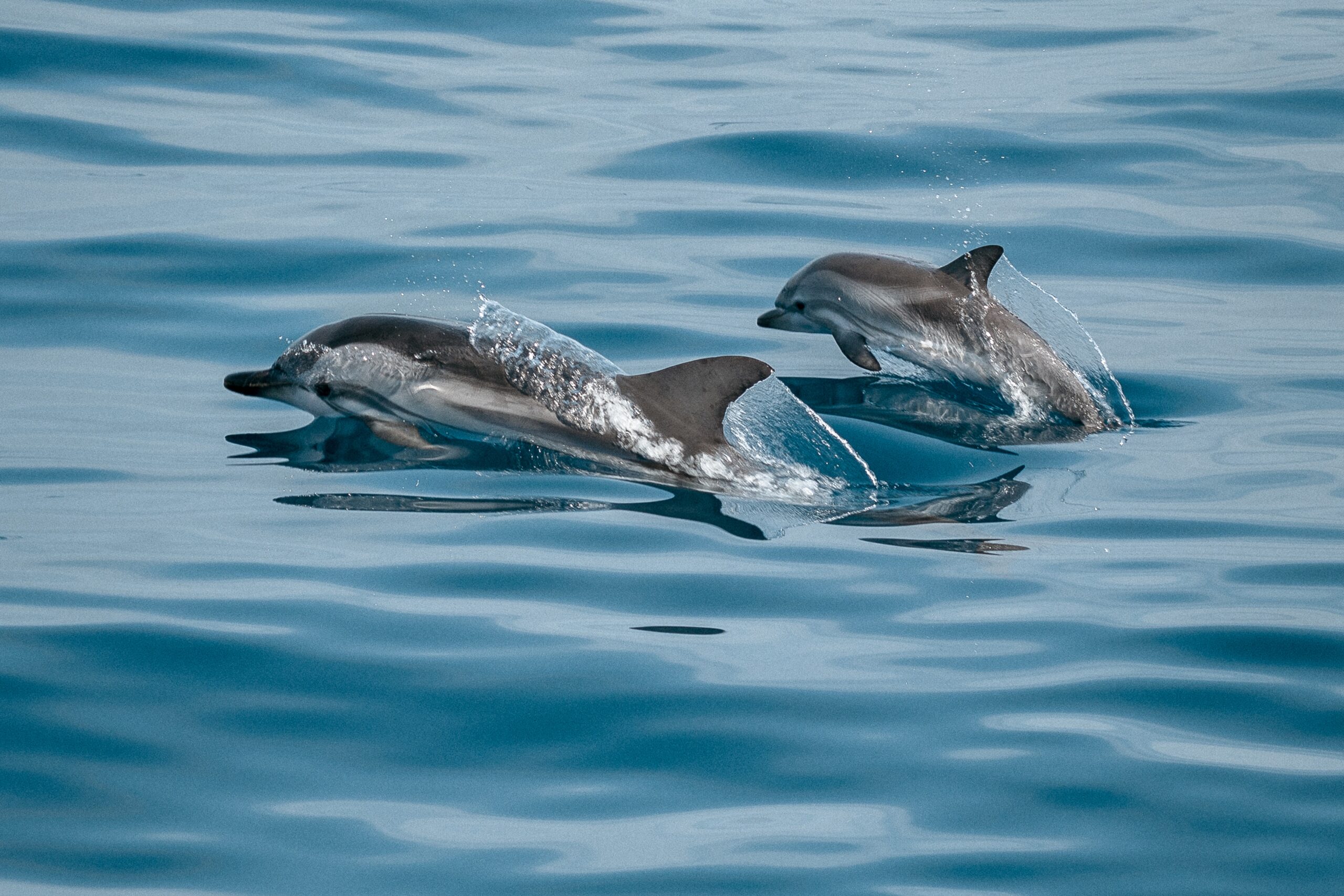Common Bottlenose Dolphin
Tursiops truncatus
- Fun Fact: These highly intelligent species use sound for both communication and hunting for food. They have many techniques for catching food.
- Strand Feeding: A unique technique seen along the SC and GA coast. A small group of dolphins will herd fish tightly together into a “bait ball”. The dolphins will then form a line and accelerate at the shore to create a wave which forces the prey onto the shore. The dolphins follow shortly behind and strand themselves on shore to eat the fish.
- Echolocations: A sonar adaptation, helps dolphin find prey in murky water, at night, or when feeding on bottom-dwelling species that burrow beneath the sand.
- Pinwheeling: Swimming on its side, dolphins will trap fish by swimming in a circle of ever tightening circumference. The dolphin will then rush through the tightly compacted school of fish to snatch as many as they can.
- Tail whacking: Dolphins use their fluke (tail fin) to hit fish and then eat the stunned prey.
- Mud Ring Feeding: A group of dolphins encircle a school of fish in the shallows and slap their flukes against the mud floor, creating a ring of opaque water. Fish become disoriented and jump over the mud ring right into the waiting jaws of dolphins positioned outside of the mud ring.
- Kerplunking: Dolphins will move their fluke through shallow sea grass beds, startling fish out of their hiding places, where they become an easy catch
- Identification Information: Bottlenose Dolphins, which are marine mammals, are the only type of dolphin found in Beaufort County. During the summer, migratory populations visit Beaufort County. Year round there are over 200 resident dolphins. They are silver-gray on top with pale gray, white, or pinkish bellies. They may grow up to 12 feet in length with an average weight of 400-600 pounds.
- Lifespan: 40 to 60 years
- Diet: Feed on fish, squid, and shrimp. Instead of using their teeth to chew, dolphins grip fish with their teeth, then swallow the fish whole, headfirst, so the spines of the fish do not catch in their throat.
Video Courtesy of Dorothy Graves

All information presented on this page was sourced from the SC Department of natural resources. Please see the button to the side for more information.
Special Shoutout to Jessica Kochman from the Port Royal Sound Foundation for her help on this page! Be sure to check out their website to learn more about their awesome events and activities!


